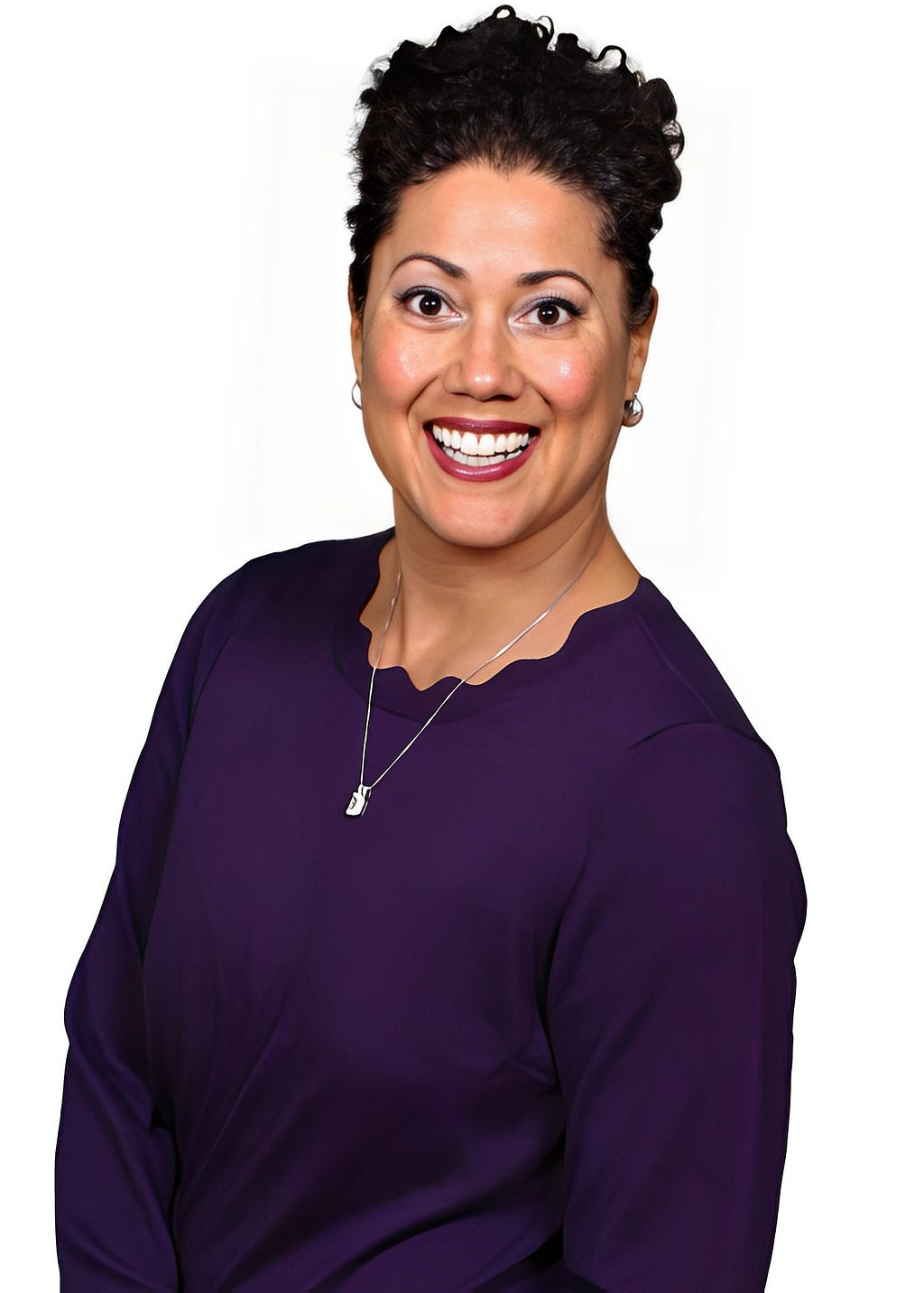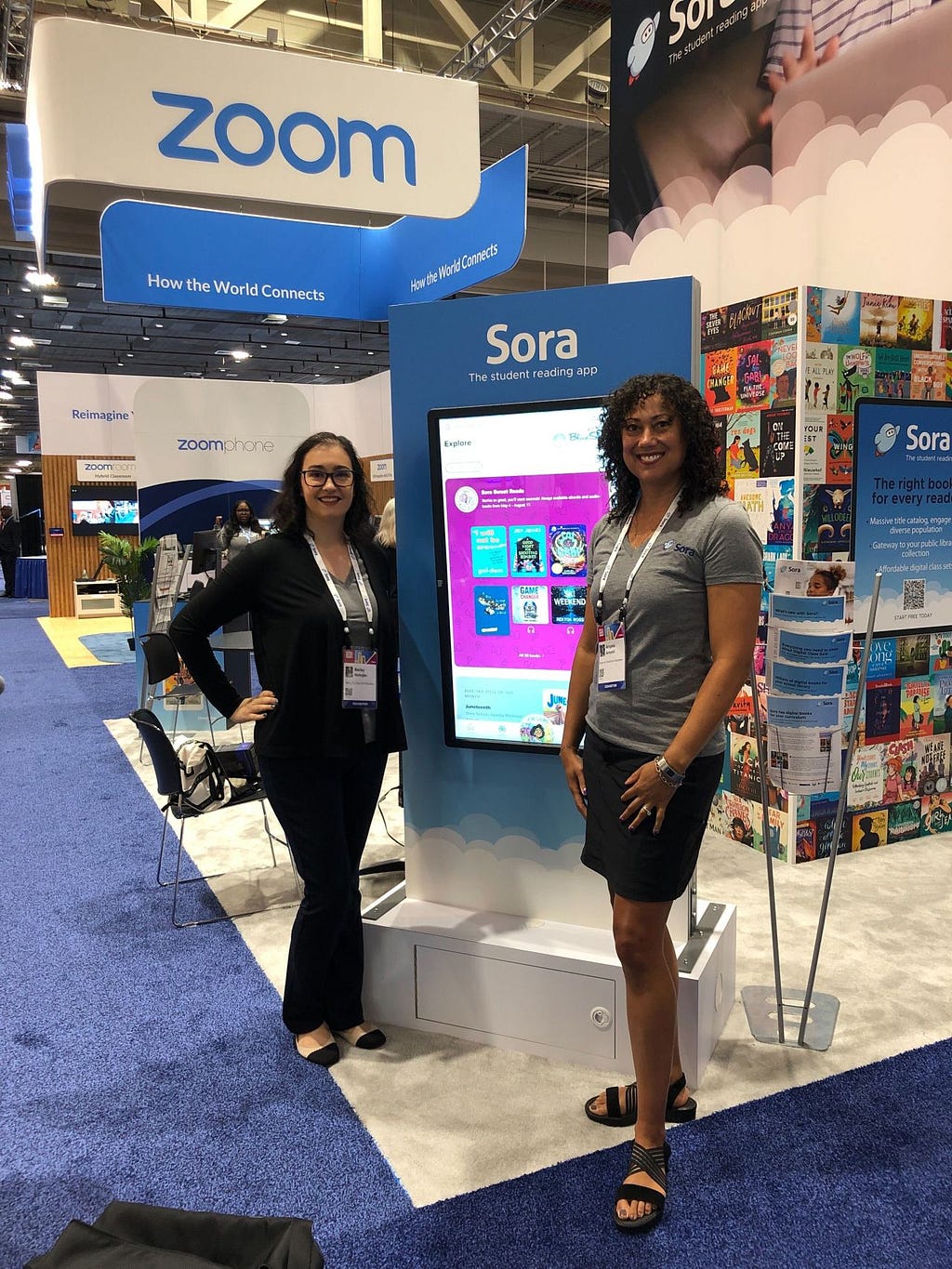Angela Arnold of OverDrive Education: 5 Things That Should Be Done To Improve The US Educational System

We’re seeing more emphasis on multimodal instruction, engaging students using manipulatives, robots, puzzles and gamification. We use elements of gaming in our reading app to help increase student motivation. Readers earn badges as they unlock new reading experiences like trying an audiobook.
As part of our interview series about the things that should be done to improve the US educational system, I had the pleasure of interviewing Angela Arnold, General Manager of OverDrive Education.
Angela Arnold is the General Manager of OverDrive’s Education division, a global digital content platform for libraries and schools. A former librarian, Angela brings to her role a wealth of experience developing and promoting reading materials for a wide audience of library patrons and other readers. Today, her team focuses on serving K–12 students through OverDrive Education’s Sora reading app, providing access to a comprehensive catalog of eBooks, audiobooks, read-alongs and other digital reading content to help students succeed both in and out of the classroom.
Thank you so much for joining us in this interview series! Before we dig in, our readers would like to get to know you a bit more. Can you tell us a bit about your “backstory”? What led you to this career path?
After earning my master’s degree in information science from the University of Michigan, I’ve consistently gravitated toward interesting human-computer interaction problems. When the internet was still new, it was important to devise ways to make it easier for every person to access and make use of what the World Wide Web had to offer.
Today, that challenge is even more urgent. There’s more stuff out there, available in more channels, on more devices, and it’s not going away anytime soon, because it drives industry and economies. Today’s young people were born digital, and this is the only reality they’ve ever known. Yet, there’s still work to do to increase access and equity for them and help them define themselves and our society. I look at my teenager, and I can’t help but wonder if that phone is surgically attached to her hand. Technology can be a powerful tool for students to realize their dreams, and one way to do that is through literacy. Putting a book on that phone opens doors to opportunity and freedom.
Can you share an interesting “A-ha!” moment that was particularly informative or rewarding?
In my current role, I really appreciate the instances when we see or hear student reactions to digital books. As a vendor selling to school districts, we obviously never engage directly with students. So, our feedback comes only in the form of social media postings, direct emails that we might receive from librarians or submissions for our School Stars program that gives students an opportunity to talk about how they’re using digital media. The School Stars entries — really one of the best forms of feedback about the last mile of consumption — are wonderful. Hearing the story of how a book impacted a student — I love that moment. It runs counter to the notion that “kids don’t read” or “kids don’t like digital reading.” They’re showing us every day how much they enjoy stories.
What exciting new project or technology are you working on right now? How will that help people, and how does it motivate you?
Every school uses a unique combination of technology to teach literacy and reading. There’s a lot of great edtech out there! The downside is that a typical teacher has hundreds of sites, logins or tools to remember and keep track of.
Lately, we’ve been working on ways to place digital books in the information systems, curriculum platforms or access points that students and educators use every day. This helps them more easily discover their next great read — many students don’t even know they have Sora — and it saves them extra clicks. For example, Sora is an Add-On that schools can enable if they use Google Classroom. It inserts books into the singular user experience where teachers already create assignments and where students work on those assignments. It’s seamless within Google Classroom. We know we need to meet users where they are.
Can you briefly share with our readers why you are an authority in the education field?
We currently offer the industry’s largest catalog of eBooks, audiobooks and streaming videos to nearly 60,000 schools worldwide. Our Sora reading app was named a TIME Magazine Best Invention of 2019. Using Sora, students can borrow eBooks and audiobooks anywhere, anytime. It’s instant reading!
One of the reasons schools choose OverDrive is because our product development is so closely tied with the experiences of customers and users. Touchpoints include standard tech support, as well as a white-glove team — typically comprised of an account manager, a digital-content librarian and several other education professionals — assigned to each school partner. Through these relationships, we’re able to hear and see what’s happening in the daily world of educators. It’s a particularly close connection, more so than what schools likely experience with their other vendors.
Ok, thank you for that. Let’s now jump to the main focus of our interview. From your point of view, what should be the response to the most recent reading results from NAEP?
The latest NAEP report exposes troubling reading deficiencies that I think are indicative of bigger challenges — it’s the check-engine light on our dashboard.
While we might be quick to say the fix is the responsibility of educators, everyone has a share in the remedy. Behavioral health professionals can help make sure students are safe and ready to learn. Communities can rally to bolster infrastructure systems that keep kids in school and keep them learning, like food security, transportation and internet access. Parents can play a larger role, too. Many parents jumped in to help during the COVID-19 pandemic, and they got to learn more about how education is deployed. They learned what it takes to keep kids engaged and on task. We know how important it is to involve parents, so our own solutions include communication templates and other social media resources to make it easier for educators to keep parents and local communities informed. In general, I think we need to ask all parties with a vested interest to continue to lean into education and help.
It’s also incumbent on vendors to take their share. We should focus on outcomes and make data more actionable. Part of our remit with Sora, for example, is to provide both granular and high-level views of student progress. Sora can capture school- and student-level data for books read, total reading time, average time per session and other information to guide reading interventions and strategies. Schools can use our On-Demand Class Sets to push out thousands of required reading books to every student in just a couple hours. And, they can see how much of the assigned reading was consumed by each student using those data tools. This simplifies practically every element of how books are currently provided to students. Plus, it’s an equity tool that ensures every student has a copy of the book.
We do need to understand, however, that it took a while for the decline, so remediation will likewise take time. But that said, we’ve already seen many examples of people coming together, from community action to Congress moving swiftly to infuse government resources such as the ESSER funds to help close gaps.

Where do you see positive actions and results?
My friend called the good things that came out of the pandemic “COVID positives.” When it comes to reading, I do see those positives, too. More schools started using digital books. More students checked out digital books. They launched digital book clubs, worked on one-on-one device adoption, fixed their Wi-Fi. Schools gained valuable insight about their educational equity gaps and got more data-driven with remedies. We’ve also seen more collaboration and cross-pollination of instructional best practices, especially when it comes to using digital resources. Educators don’t feel as isolated or that they must go it alone in their classrooms. They also are more willing to try new teaching techniques.
Teachers should absolutely feel empowered to ask for more collaboration from their vendors, from parents and from other stakeholders within their school environments. This is true particularly when it comes to financing 21st-century learning. Teachers across departments, for example, may be able to share budgets for digital assets. Or, they can work across building boundaries or community groups for assistance with grant writing. OverDrive provides grant-writing resources and best practices that can help educators secure funding for Sora digital collections. It’s all about collaboration and innovation.
What’s being done to engage young people in STEM? How can we increase that engagement?
We’re seeing more emphasis on multimodal instruction, engaging students using manipulatives, robots, puzzles and gamification. We use elements of gaming in our reading app to help increase student motivation. Readers earn badges as they unlock new reading experiences like trying an audiobook.
Books with STEM-related content can also spark interest. A book featuring a STEM hero or heroine, for example — stories about women scientists, black inventors and young engineers — might encourage students to come at material from different angles. Science isn’t just about the mechanics of what happens, it’s also about the impact on people and the world they live in. That’s where storytelling comes in.
Can you please give us your favorite “Life Lesson Quote”? How does that inspire you?
Somebody once told me that everything that’s problematic in America eventually gets resolved in a K–12 environment. We have inequities in information access, so we support school libraries. We have food insecurity, so we provide breakfast and hot lunches. We have a deficit of childcare, so we offer before- and after-school programs. Schools have even played an important role in working out guidelines for behaviors during COVID.
Schools also can help remedy the deficit of books in students’ home environments. Research shows that students from households with fewer books typically have poorer literacy outcomes. The Sora reading app can help in this area by providing 24/7 access to curriculum titles and class sets, as well as pleasure-reading digital books. If we want kids to grow up to be readers, the single, essential requirement is access to more books!
Someone likened the pandemic to a forest fire that decimated processes, social interaction and progress. But just as there is new growth after a forest fire, so there’ll be new growth in our education structure. We’ll see a new landscape of better, more diverse and more resilient solutions.
We are blessed that some of the biggest names in Business, VC funding, Sports, and Entertainment read this column. Who would you most like to meet for lunch?
I’d like to do an exit interview with a retiring superintendent, a middle grades teacher and a Title I administrator. I’d love for that panel to tell me: what did you learn, what would you tell your younger self, what education trends do we need to arrest or support, what else should we be doing in schools? I’d also want their state legislators to attend that discussion, so they could help do something about it!
How can our readers further follow your work online?
Educators can visit our website at DiscoverSora.com or reach out to me on LinkedIn.
Thank you so much for these insights! This was so inspiring!
Angela Arnold of OverDrive Education: 5 Things That Should Be Done To Improve The US Educational… was originally published in Authority Magazine on Medium, where people are continuing the conversation by highlighting and responding to this story.
